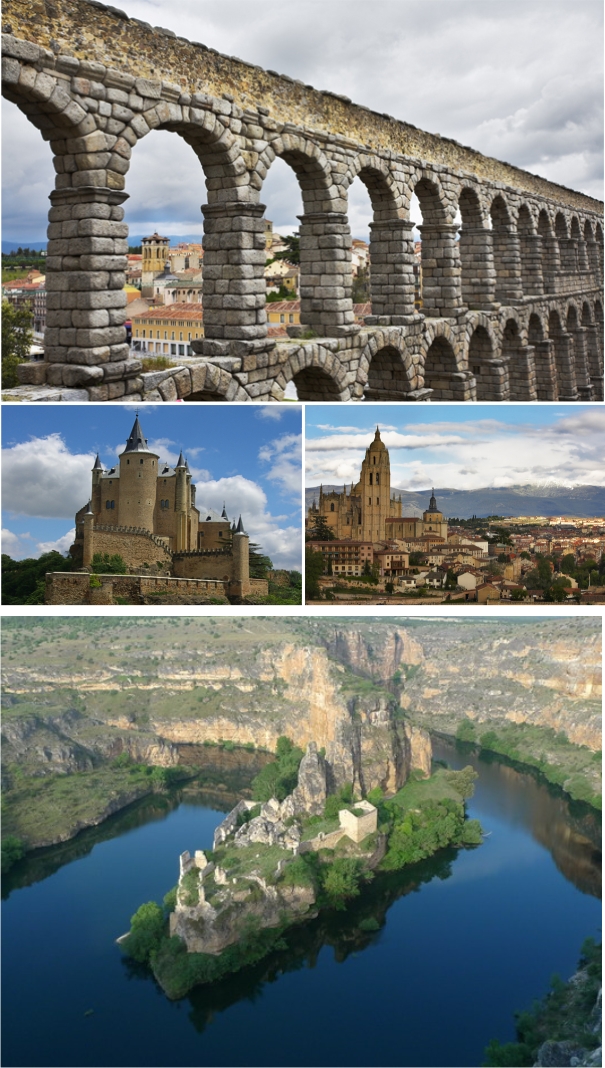 P R O M O C I O N E S T U R Í S T I C A S |
TURISMO CULTURAL - INDUSTRIAL Y GASTRONÓMICO

| Segovia | Acueducto / Aqueduct | Catedral / Cathedral | Alcázar / Alcazar |
|
SEGOVIA Población: 56.660 habitantes, Altitud: 1.000 m s/m Extensión: 164 Km2, Gentilicio: Segoviano Situada al pie de la sierra de Guadarrama y junto al río Eresma, está limitada por el sistema Central, Peñalara, Siete Picos, Pico Lobo y Peña Cebollera. Se desconoce el origen de la ciudad, aunque aparece ya mencionada en fuentes romanas durante el siglo I antes de Cristo. Fruto de esta época es el monumento característico de la ciudad: el acueducto romano, construido en tiempos del emperador Trajano y el mayor monumento romano existente en España, con 728 m de longitud. En esta ciudad se conserva uno de los monumentos de arte romano más importante, el acueducto de Segovia, de la época de Trajano. También destaca la muralla, de la cual no se tiene conocimiento de elementos anteriores al románico, y diversas puertas entre las que cabe destacar la de San Cebrián, la de Santiago y San Andrés. Dentro de la muralla destacan gran número de iglesias románicas del siglo XII y XIII, como la de San Juan de los Caballeros, San Esteban, San Martín o la de la Trinidad. La Catedral de Segovia fue alzada en el siglo XVI. Otros edificios a destacar son varios monasterios, como el del Parral, o conventos como el de San Antonio del Real y el de Santa Cruz. La arquitectura de Segovia también se extiende a construcciones civiles, como las casas románicas o los palacios del siglo XV. |
|
SEGOVIA Population: 56,660 inhabitants A ltitude: 1000 m s/m Length: 164 Km2 Gentilic: Segoviano. Located at the foot of Sierra Guadarrama and along the river Eresma, it is limited by the central mountain range, Peñalara, Seven Peaks, Pico Lobo and Peña Cebollera. The origin of the city is unknown, but appears already mentioned in Roman sources during the first century BC. The result of this time is the landmark of the city: the Roman aqueduct, built under Emperor Trajan and the largest existing Roman monument in Spain, with 728 m in length.In this city one of the most important monuments of Roman art is preserved, the aqueduct of Segovia, in the time of Trajan. It also stands out the wall, which is not aware of previous Romanesque elements, and some gates among which include the San Cebrian, Santiago and San Andrés. Inside the wall stand large number of Romanesque churches of the twelfth and thirteenth century, such as San Juan de los Caballeros, San Esteban, San Martin or the Trinity. Segovia Cathedral was raised in the sixteenth century. Other important buildings are several monasteries, like Parral Monastery, or convents like San Antonio del Real and Santa Cruz. Segovia architecture also extends to civilian buildings such as the Romanesque houses or palaces of the fifteenth century . |
